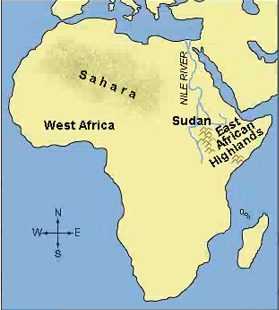题目解析:
【题目翻译】根据第1段,下列哪一项对于更新世末的早期粮食生产是正确的?
A:在非洲西部和中部的某些地区,一些人已经在种植山药等根茎植物。
B:种植谷类作物已经被生活在热带雨林边缘的人们广泛有效地利用。
C:来自撒哈拉南部边界的人们首次在中非和西非引进了先进的“草业”形式。
D:由于草原地区夏季降雨量减少,根和树作物的种植取代了谷类作物的种植。
【判定题型】:题目问的是文章中的具体细节信息,故根据题目问法可以判断本题为事实信息题。
【关键词定位】:根据关键词“early food production by the end of the Pleistocene”,定位到Passage 1第1句,原句为“At the end of the Pleistocene (around 10,000 B.C.), the technologies of food production may have already been employed on the fringes of the rain forests of western and central Africa, where the common use of such root plants as the African yam led people to recognize the advantages of growing their own food.”
意思是“在更新世的末期(约公元10000 ),粮食生产技术可能已经在西部和中部非洲的雨林中使用,在那里,在非洲的普通用途的基础上,非洲的老年人能够对其自己的食物产生影响。”。
【逻辑分析】是问更新世末和早期粮食生产之间的关系。
【选项分析】
A选项:在西非和中非的某些地方,有些人已经开始种植根茎类植物,例如山药。根据关键词“root plant”和“yams”定位到第一段第一句的后半句“……where the common use of such root plants as the African yam led people to recognize the advantages of growing their own food.”这句话说明当时人类确实已经开始种植山药等根茎类作物了。故A选项正确。
B选项:居住在热带雨林边缘的人已经高效并广泛地种植了谷类作物。错误,因为文中只提到种植块根植物和树本植物,谷类作物当时还没开始种植,所以B选项与原文矛盾。排除。
C选项:“蔬菜栽培”的种植方法是由撒哈拉沙漠南部边界的人第一次引入非洲中部和西部地区的。错误,因为文中最后一句只说“……as it came into use south of the grassland areas on the Sahara's southern borders.” 这种种植技术已经在撒哈拉沙漠南部边界地区的草原南部被使用。但是没有说这些地区的人将这一技术引入非洲中部和西部地区,故C选项未提及,排除。
D选项:块根植物和树本植物的种植取代了谷类植物的种植,因为草原地区的降水量越来越少。这一信息在原文中完全未提及,故排除。


